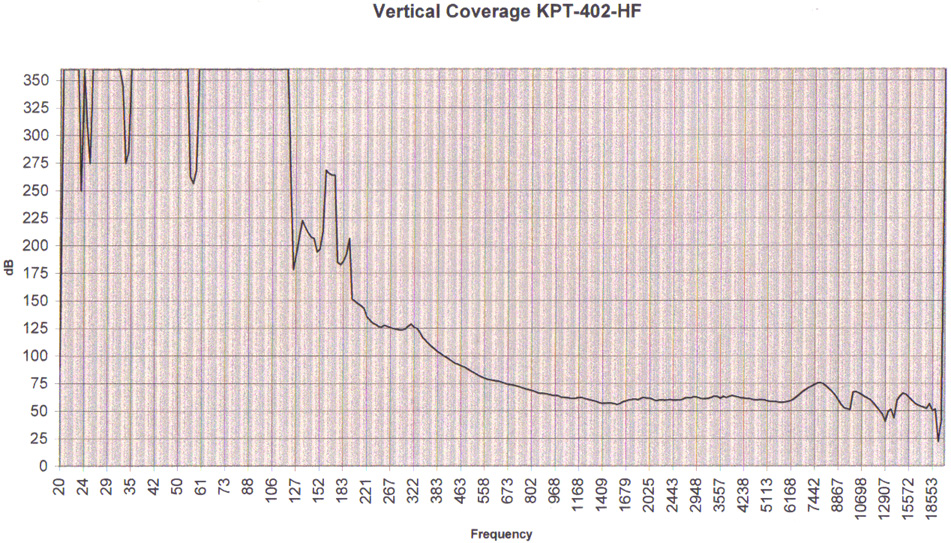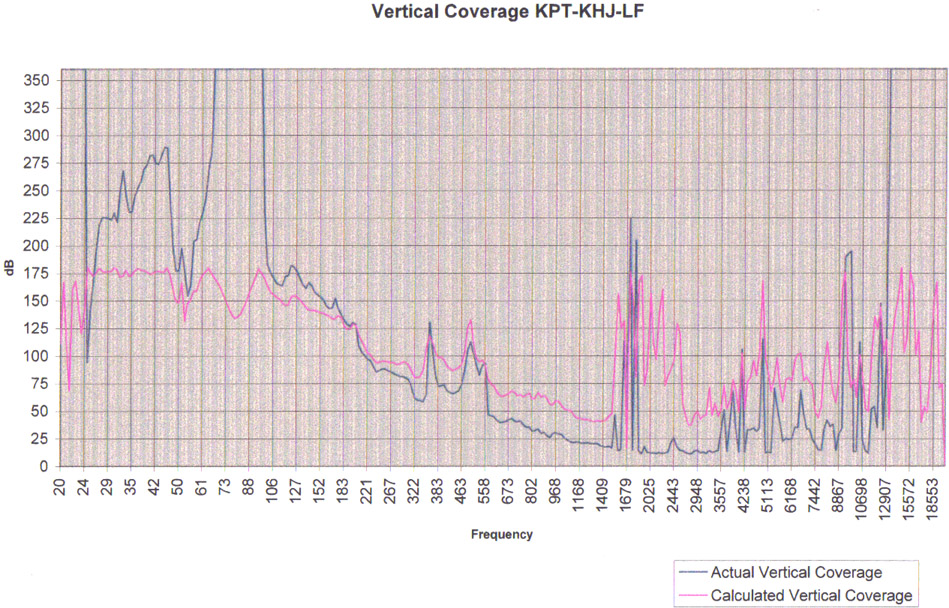http://www.diyaudio.com/forums/multi-way/230857-la-scala-bass-horn.html
http://www.diyaudio.com/forums/multi-way/248198-midbass-horn-2.html
If flat FR is your measure of merit (even after seeing the before-and-after-EQ plots) then I'd recommend direct radiators - vented, such as a Cornwall or the myriads of other vented boxes. In this passband (80-600 Hz) horn-loaded drivers don't really have a flat FR (IMHE). It's easily EQed out and sounds great, however. Even a 1/2 wave horn good to 80 Hz would be 2.2 metres in length, and would still have FR ripple.
If you are still thinking about horns, the La Scala is compact, relatively inexpensive, and available.
More midbass horns: High Efficiency Speaker Asylum
Red Spade Audio: Altec A7 Voice of the Theatre horns measured
https://community.klipsch.com/index...-look-at-horns-vs-direct-radiators/?p=1035968
High Efficiency Speaker Asylum
RCA Ubangi - Page 3
5 way horns big boy system - pink fish media
http://www.diyaudio.com/forums/multi-way/248198-midbass-horn-2.html
If flat FR is your measure of merit (even after seeing the before-and-after-EQ plots) then I'd recommend direct radiators - vented, such as a Cornwall or the myriads of other vented boxes. In this passband (80-600 Hz) horn-loaded drivers don't really have a flat FR (IMHE). It's easily EQed out and sounds great, however. Even a 1/2 wave horn good to 80 Hz would be 2.2 metres in length, and would still have FR ripple.
If you are still thinking about horns, the La Scala is compact, relatively inexpensive, and available.
More midbass horns: High Efficiency Speaker Asylum
Red Spade Audio: Altec A7 Voice of the Theatre horns measured
https://community.klipsch.com/index...-look-at-horns-vs-direct-radiators/?p=1035968
High Efficiency Speaker Asylum
RCA Ubangi - Page 3
5 way horns big boy system - pink fish media
Last edited:
The two paths are quite a distance apart, which causes off axis peaks and lobes even if you correct the rather major on axis dips and peaks.What's your take on a jubilee bass bin (with no corner mounting) vs conical/hyperbolic?
A conical horn has constant directivity. I cant think of any examples of a hyperbolic horn. Exponential, tractrix and so on all narrow in frequency at higher frequencies.
The K-402 (and KPT-305) horizontal and vertical coverage plots vs. frequency (modified tractrix):The two paths are quite a distance apart, which causes off axis peaks and lobes even if you correct the rather major on axis dips and peaks.
A conical horn has constant directivity. I cant think of any examples of a hyperbolic horn. Exponential, tractrix and so on all narrow in frequency at higher frequencies.


The Jubilee bass bin (KPT-KHJ-LF, an exponential expansion) horizontal and vertical coverage plots vs. frequency:


Last edited:
A "JubScala" - a K-402 with a La Scala bass bin:
An externally hosted image should be here but it was not working when we last tested it.
Wow, just like that, it won't work...except that the OP said nothing about ripple - you did.
I was making the assumption that the OP wants quality - sorry I guess I over stepped.
I guess that you 're from Missouri? It's been my experience that the specifications published by Roy Delgado at Klipsch (Pro Products) are always accurate. I do not own a KPT-305, but I suppose that I have to have a plot of test data to refute any statements of non-belief, too? The two horns in the middle of this cinema stack are the 402 and 305, respectively.
Chris

Nope, I'm not from the "Show Me State". What I am is well read and experienced in horn building. There are less than savory ways to get a horn that is shorter than 1/4 WL long to play lower. I don't build things that way because it is too compromised, normally has phase issues, and I don't don't prescribe to DSP band-aids.
Thanks for the lesson in your knowledge base--I guess that I should've known that you already have the answer in hand.
Perhaps you can share your knowledge on this subject to solve the OP's stated requirements...? The data provided I suppose from your response isn't "good enough" for the OP? Or are his requirements still wrong?
Chris
Perhaps you can share your knowledge on this subject to solve the OP's stated requirements...? The data provided I suppose from your response isn't "good enough" for the OP? Or are his requirements still wrong?
Chris
AudioRoundTable.com: Pi Speakers => Midhorn Input Data
Apparently, Wayne had problems with his straight midbass horn--and hasn't solved them yet. Straight conical horns of these passbands may have issues, especially when you consider your 60 x 90 degree coverage angle requirement. Perhaps one fold would be prudent--like the FH-1 or the La Scala?
Did you have an opinion on Claude's Quarter Pie bin?
Apparently, Wayne had problems with his straight midbass horn--and hasn't solved them yet. Straight conical horns of these passbands may have issues, especially when you consider your 60 x 90 degree coverage angle requirement. Perhaps one fold would be prudent--like the FH-1 or the La Scala?
Did you have an opinion on Claude's Quarter Pie bin?
Last edited:
The directivity of Jubilee bass bin looks quite good. Thanks for posting those.
It's just unfortunate that the frequency response is a roller coaster. Some uneveness is fine, it doesn't need to be a straight line. However, I find the response of Jube bass bin much too uneven.
It's just unfortunate that the frequency response is a roller coaster. Some uneveness is fine, it doesn't need to be a straight line. However, I find the response of Jube bass bin much too uneven.
What do you recommend?I was making the assumption that the OP wants quality
What about the red trace?

It's ok. Looks like EQ has been used. Still, there's a deviation of 7 dB which is a little high. But it depends how and where the measurement was conducted.
Claude's quarter pie - without EQ compared to a La Scala bass bin without EQ.
PWK once said that using flat on-axis raw FR as your prime measure of merit results in direct-radiator loudspeaker designs. High modulation distortion can't be corrected by use of electronics, but FR can--easily. You also can't correct directivity mismatches at the crossover passband(s) or beaming/loss of pattern control. Your ears will also confirm this.
PWK once said that using flat on-axis raw FR as your prime measure of merit results in direct-radiator loudspeaker designs. High modulation distortion can't be corrected by use of electronics, but FR can--easily. You also can't correct directivity mismatches at the crossover passband(s) or beaming/loss of pattern control. Your ears will also confirm this.
Last edited:
Thanks for the lesson in your knowledge base--I guess that I should've known that you already have the answer in hand.
Perhaps you can share your knowledge on this subject to solve the OP's stated requirements...? The data provided I suppose from your response isn't "good enough" for the OP? Or are his requirements still wrong?
Chris
What the OP wants cannot be achieved. Controlled directivity of 90 X 60, frequency response from 80Hz to 600Hz, and compact size is not possible by any means I'm familiar with. None of the greats before us (Klipsch, Edgar, Leach, Keele, Olson, Voight, etc) have been able to do what the OP wants either. The OP must change the requirements to something that is achievable.
What do you recommend?
Forget the 90 X 60 directivity requirement and use a B&C 12PE32 in a folded mid bass horn similar to the University classic while following the folding advice found in Bruce Edgar's Show Horn and Monolith articles. This is one of the few ways you will get close to the package size you want. If this is not acceptable to you, then you will need to change some of your other requirements.
The articles mentioned can be viewed here: Download Section
Just in case.What the OP wants cannot be achieved. Controlled directivity of 90 X 60, frequency response from 80Hz to 600Hz, and compact size is not possible by any means I'm familiar with. None of the greats before us (Klipsch, Edgar, Leach, Keele, Olson, Voight, etc) have been able to do what the OP wants either. The OP must change the requirements to something that is achievable.
Controlled directivity (90x60) is only something I've regarded at the crossover, which most likely will be at 500 Hz. Therefore I mentioned CD down to 450 Hz.
The frequency response I've mentioned is only an approximate. I can live fine with something like 110-500 Hz.
When it comes to size I can live with something a little wider and taller then the K-402 horn and much deeper. 120-130 cm is around the maximum depth.
The horn would have to be at least 78cm long to load down to 110Hz. To maintain the 90 X 60 angles would require the mouth to be about 22765cm^2. In other words about 118cm by 190cm. the least reasonable of your requirements is the directivity. This is why people like Earl Geddes choose direct radiators for matching up with mid range/high range horns.
- Home
- Loudspeakers
- Multi-Way
- Pros and cons of different midbass horns
